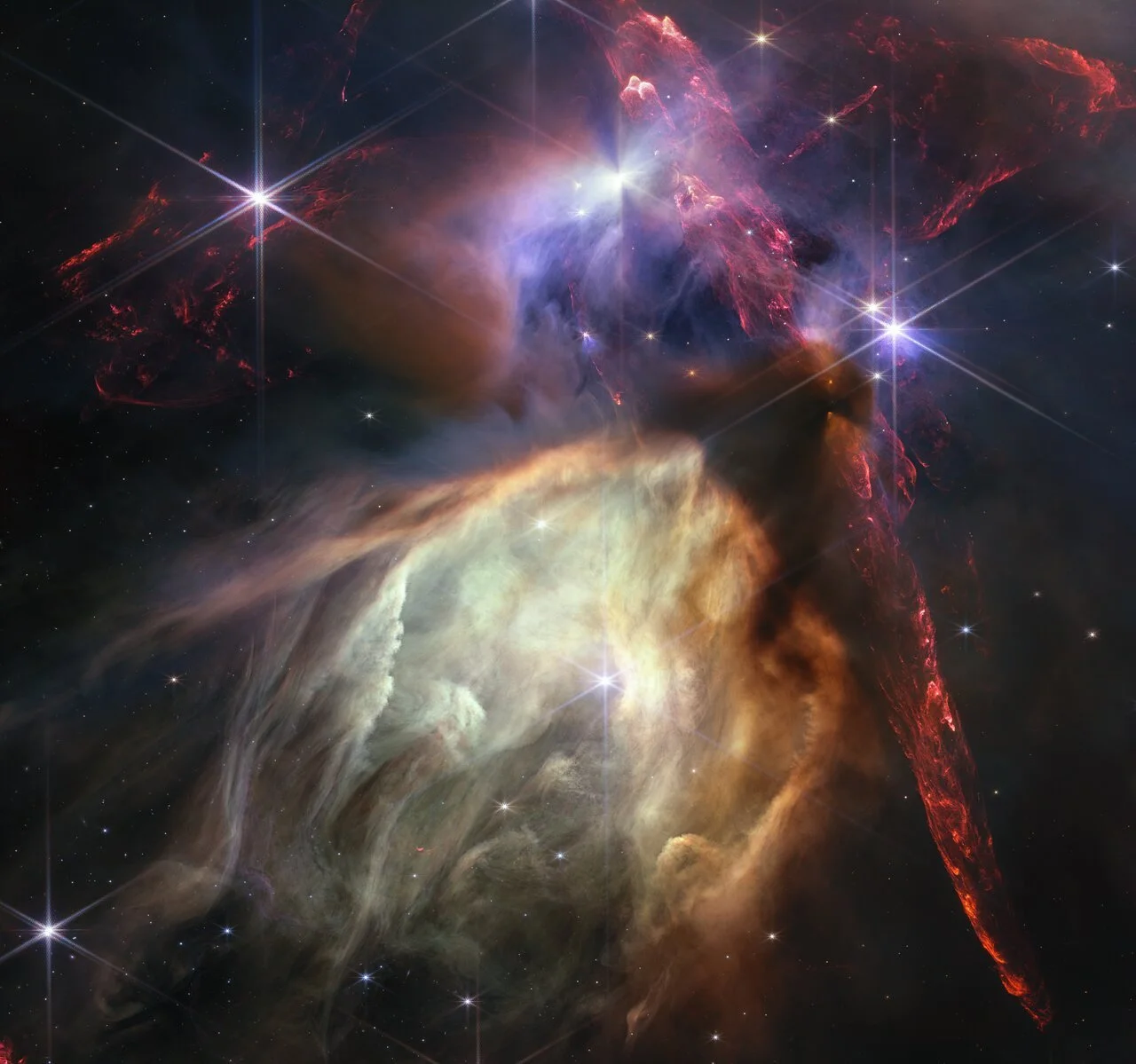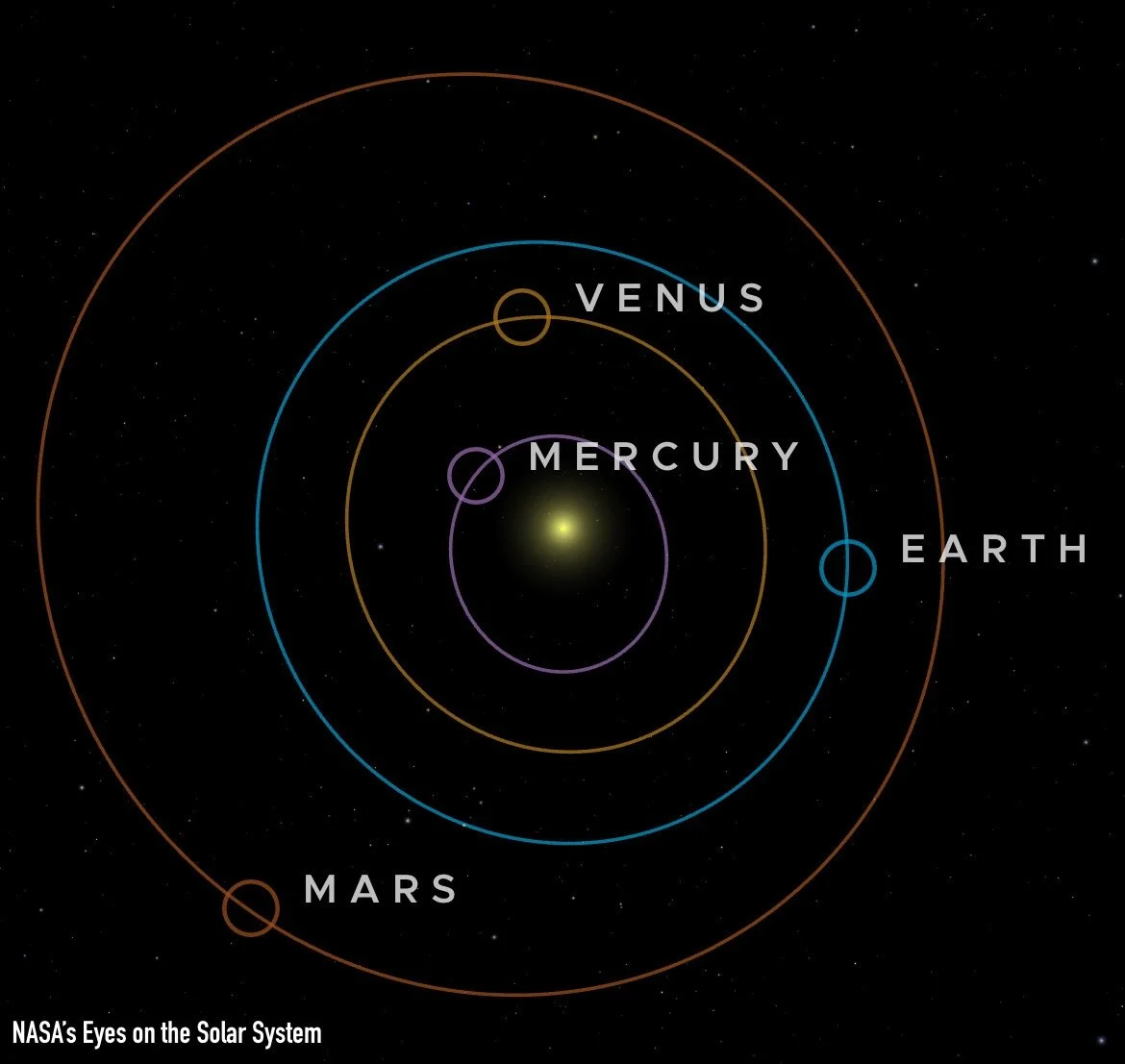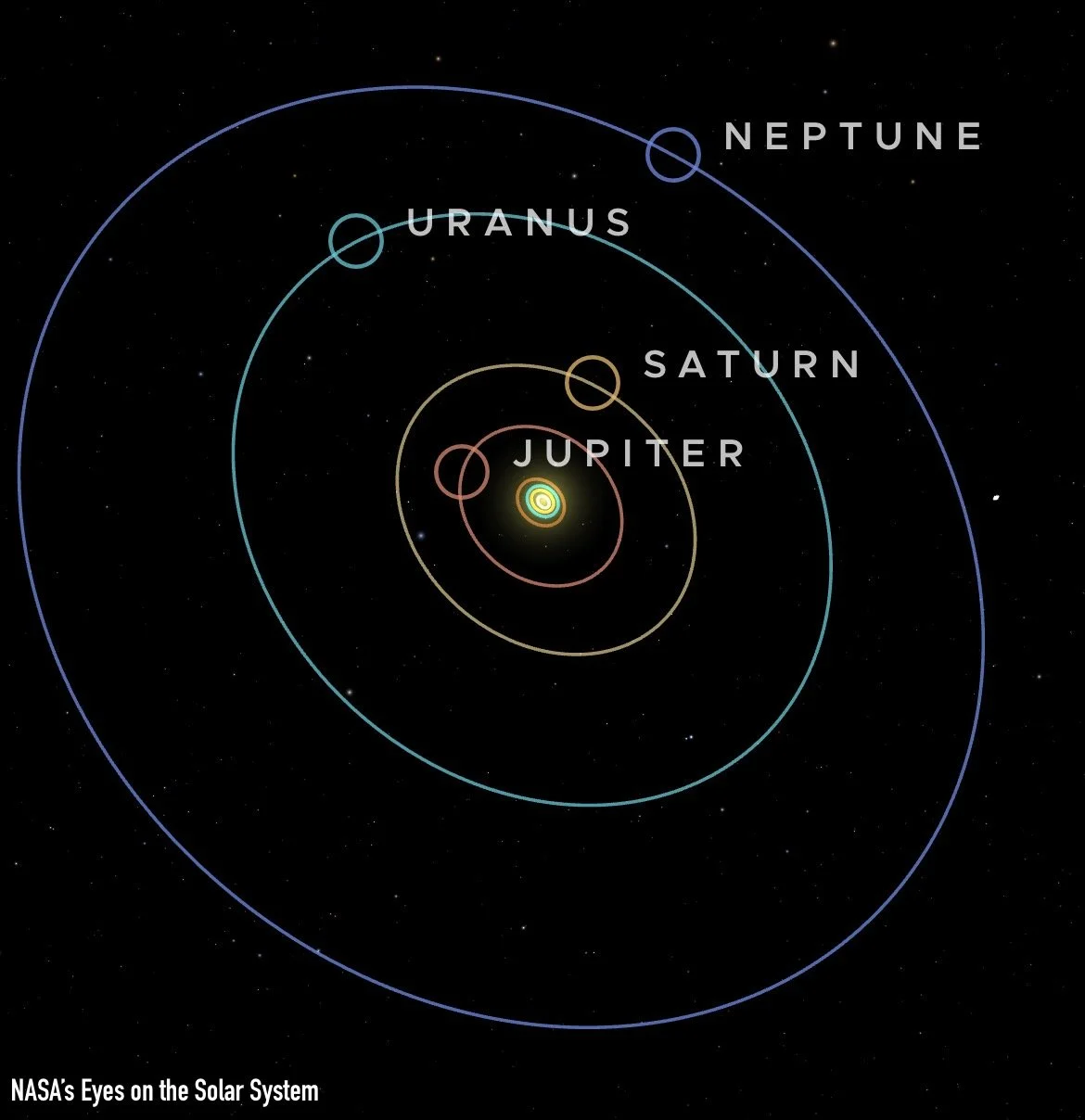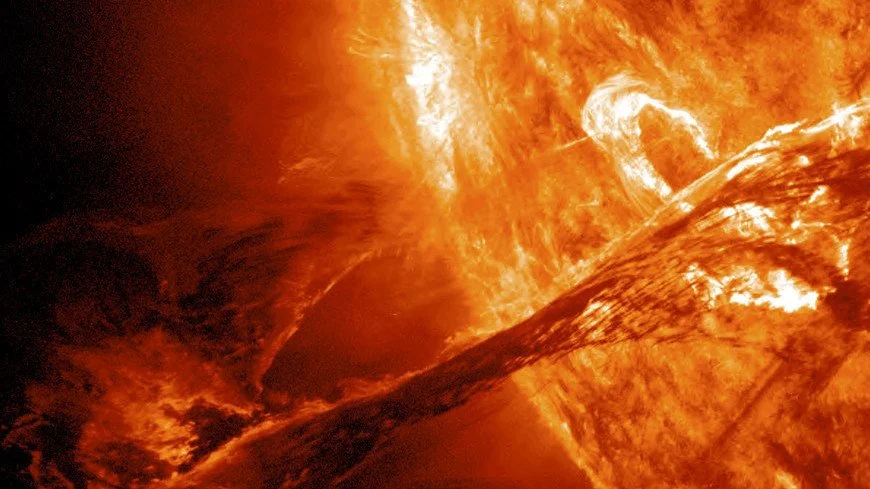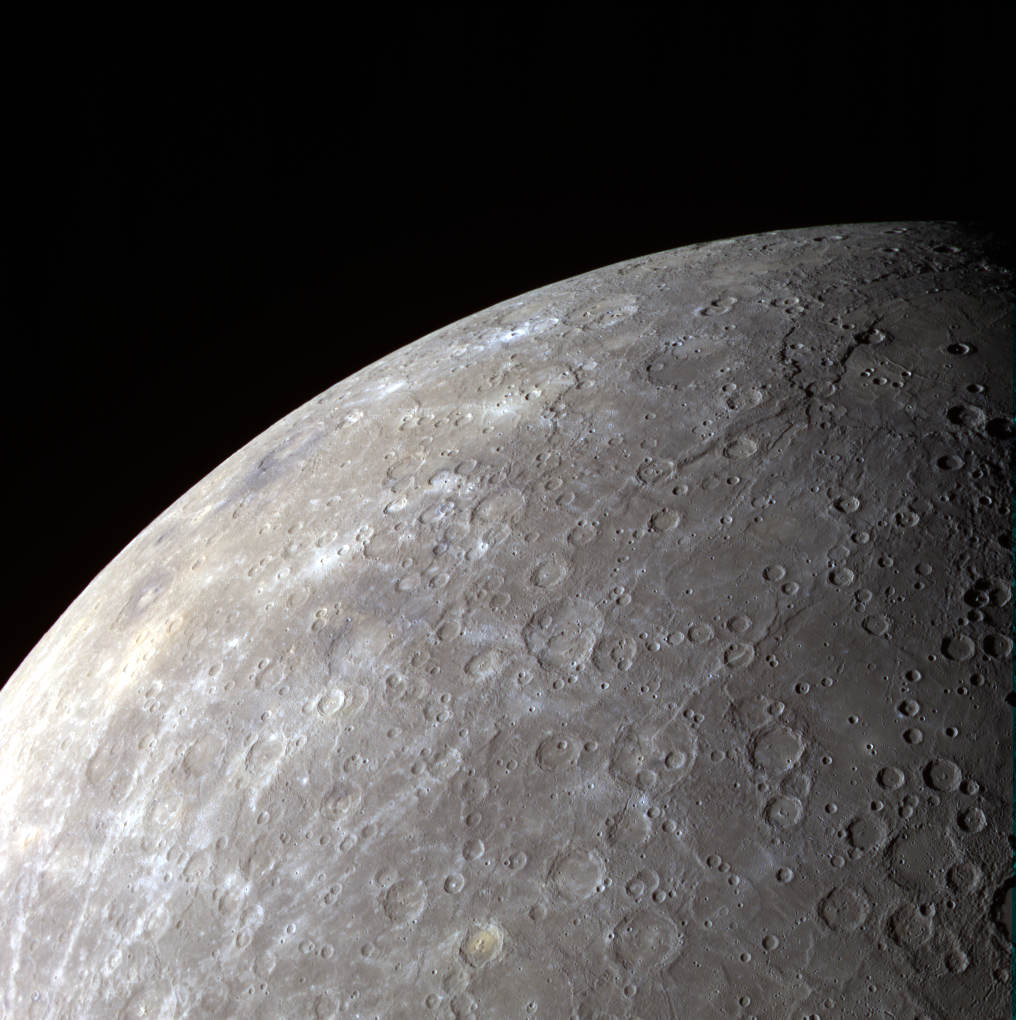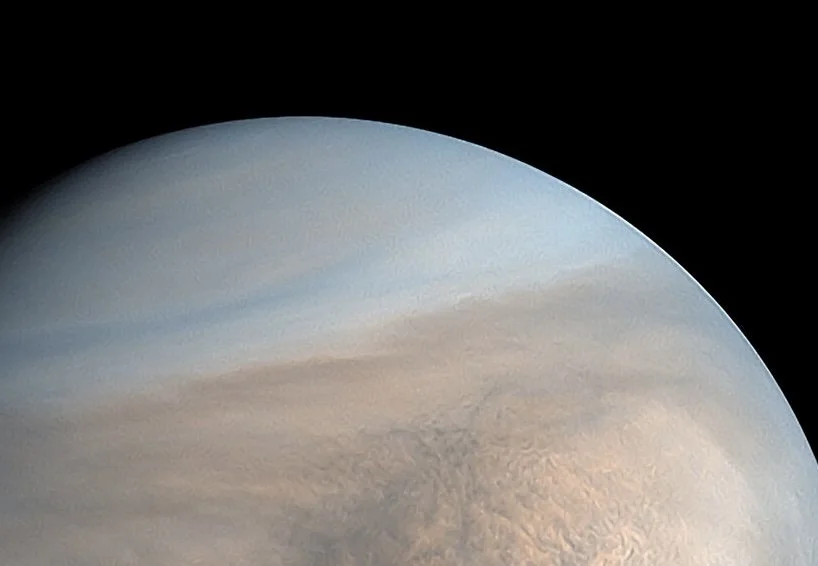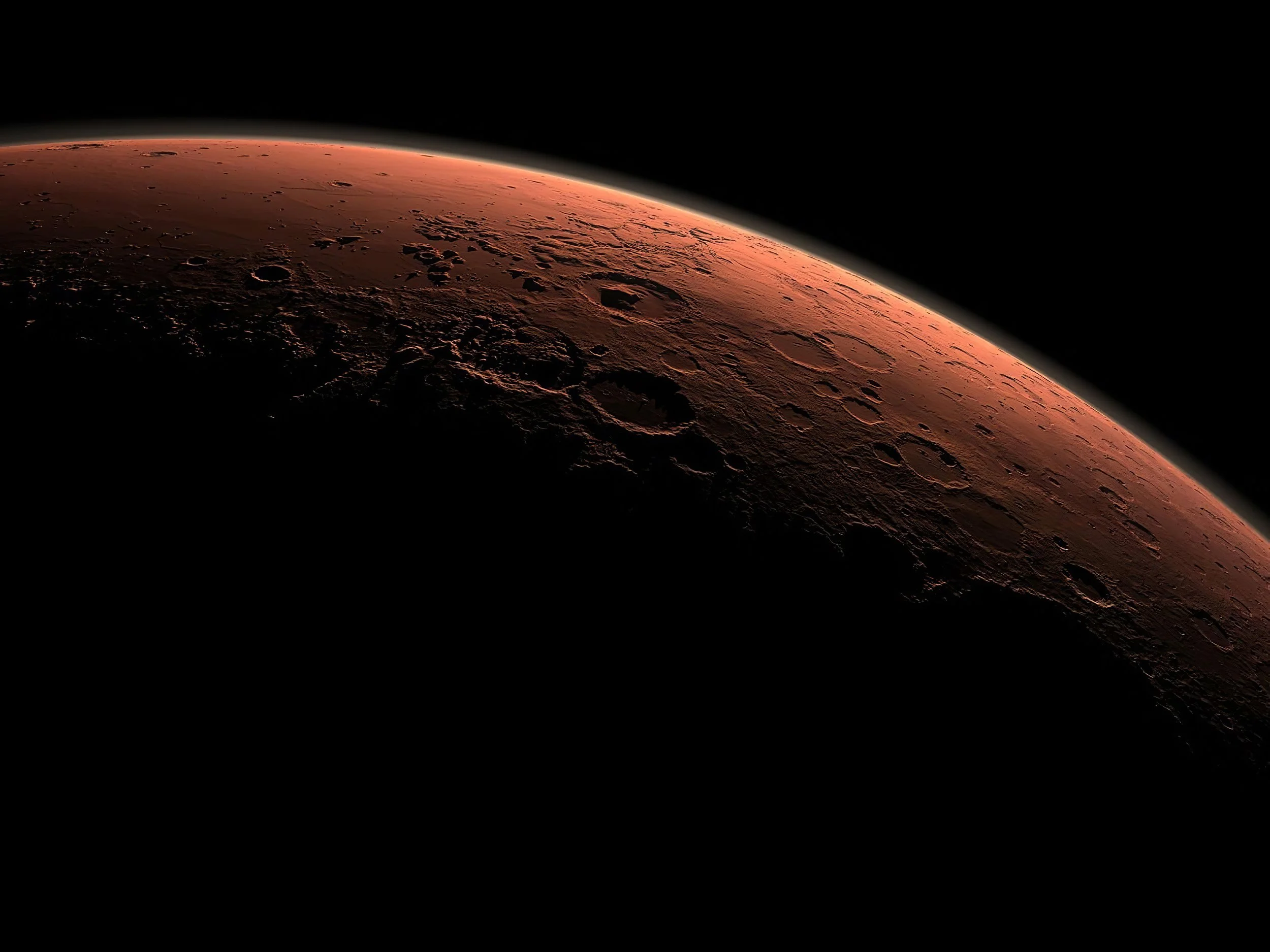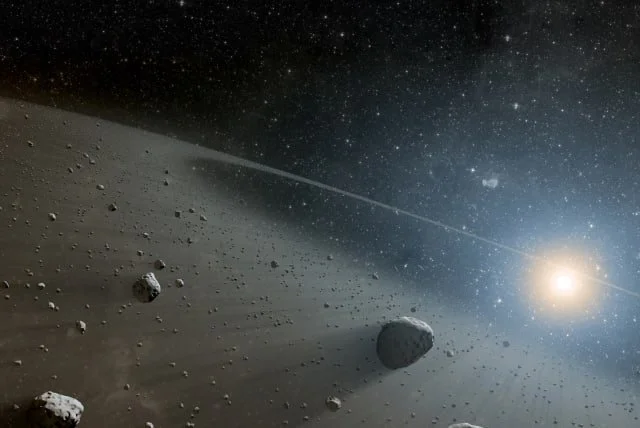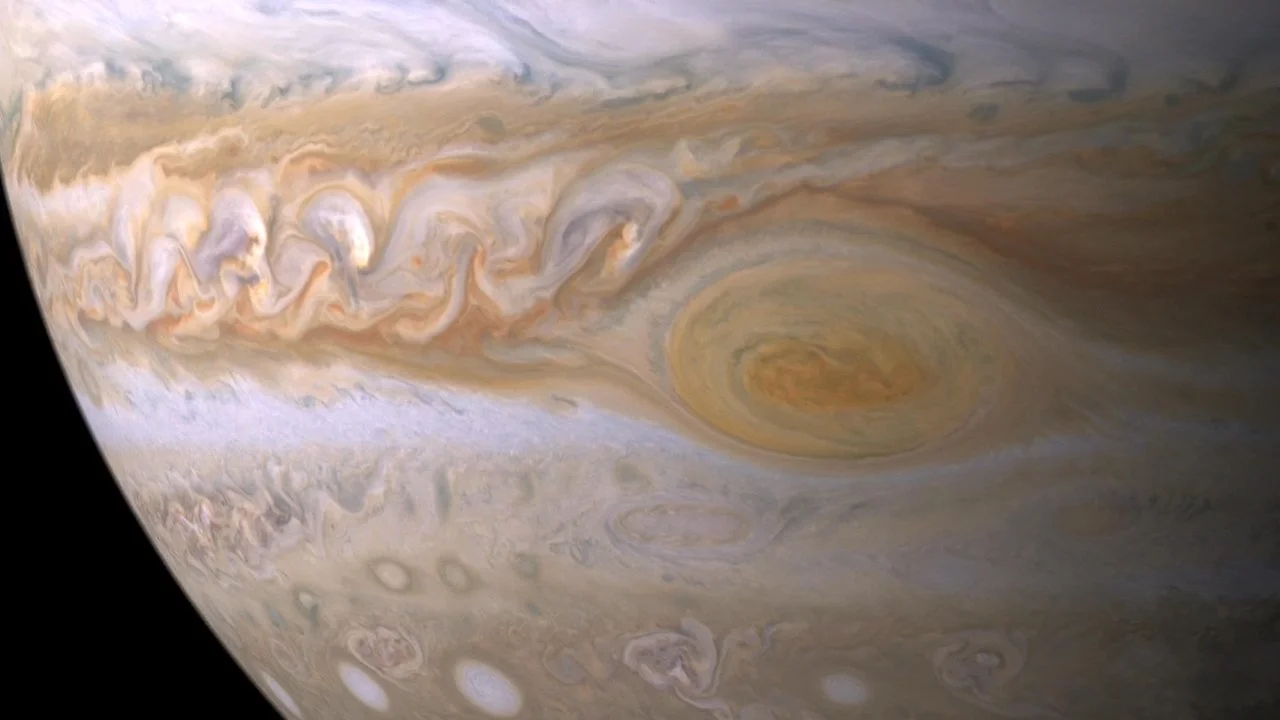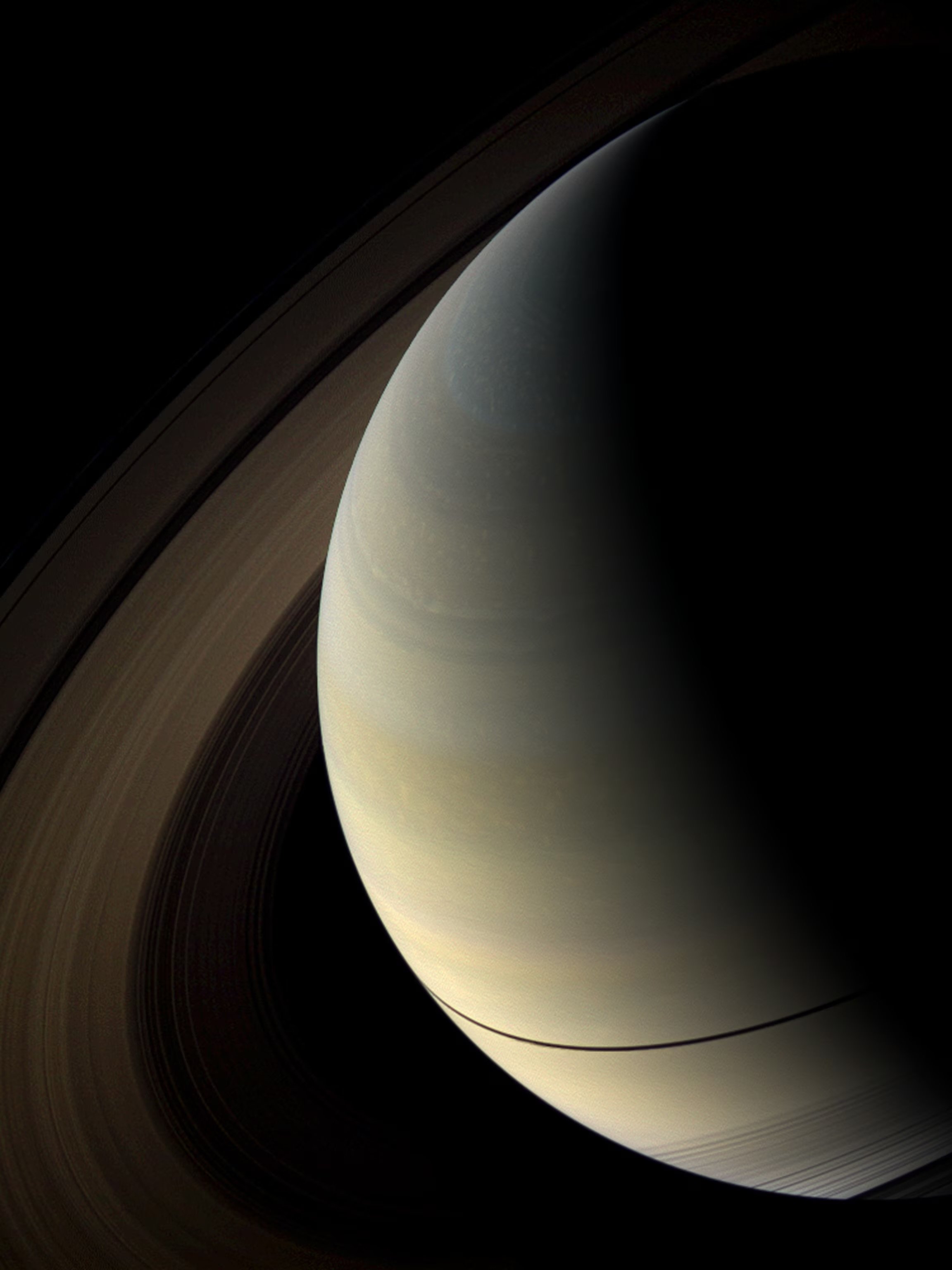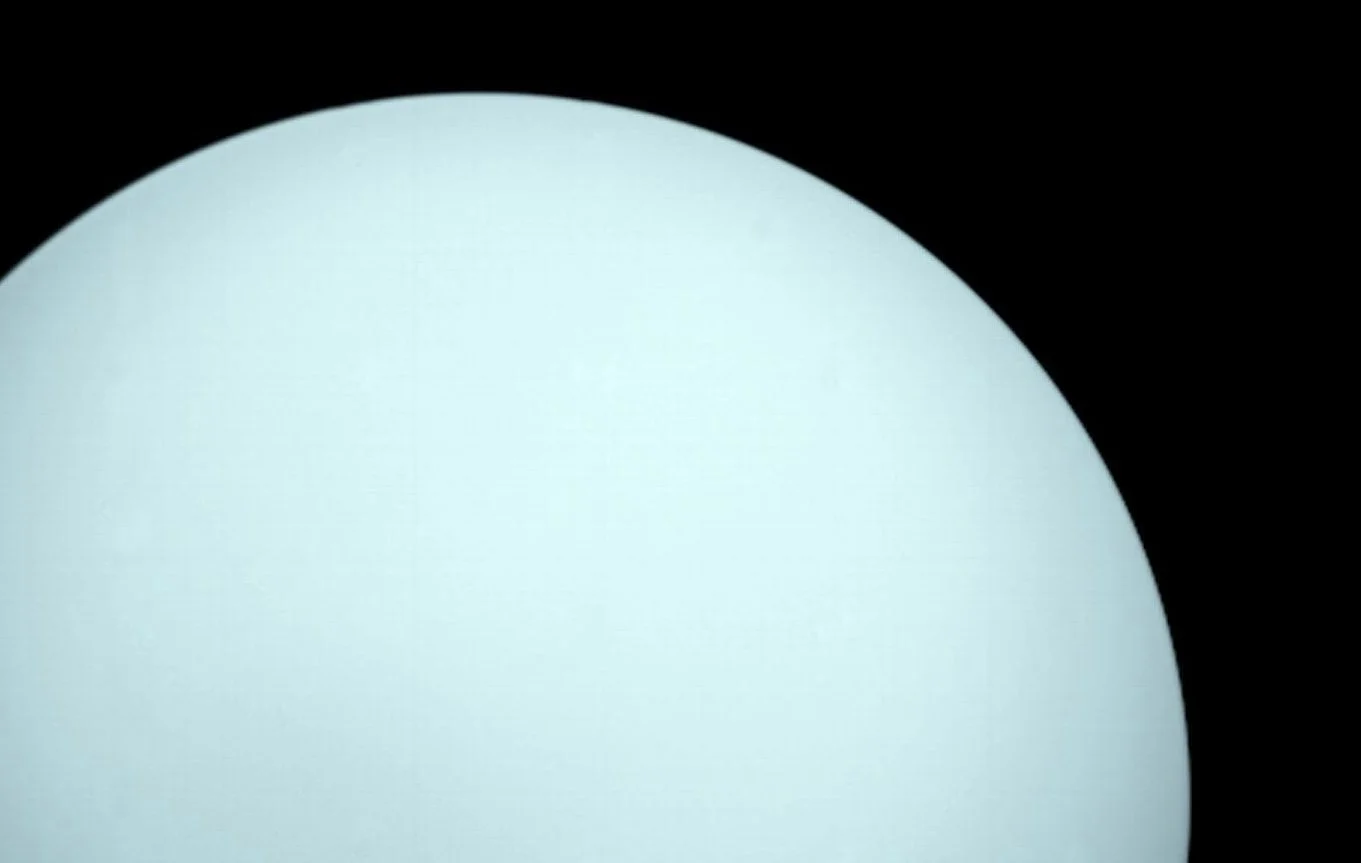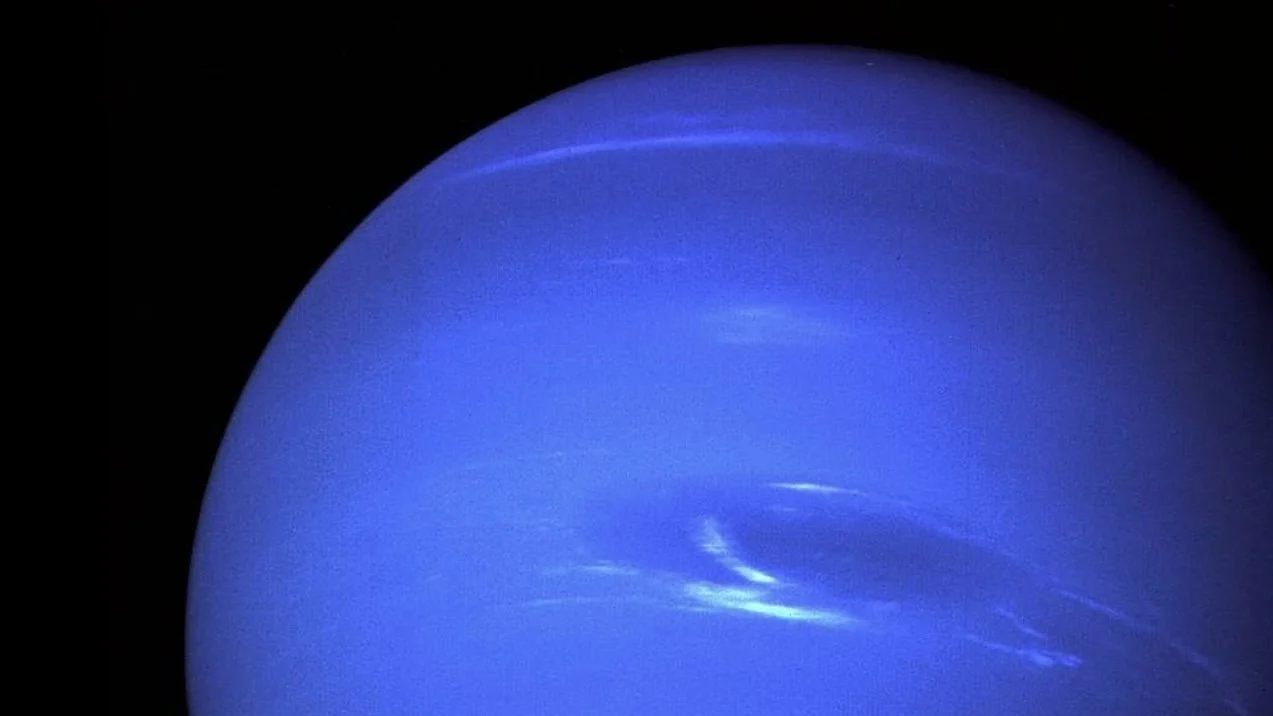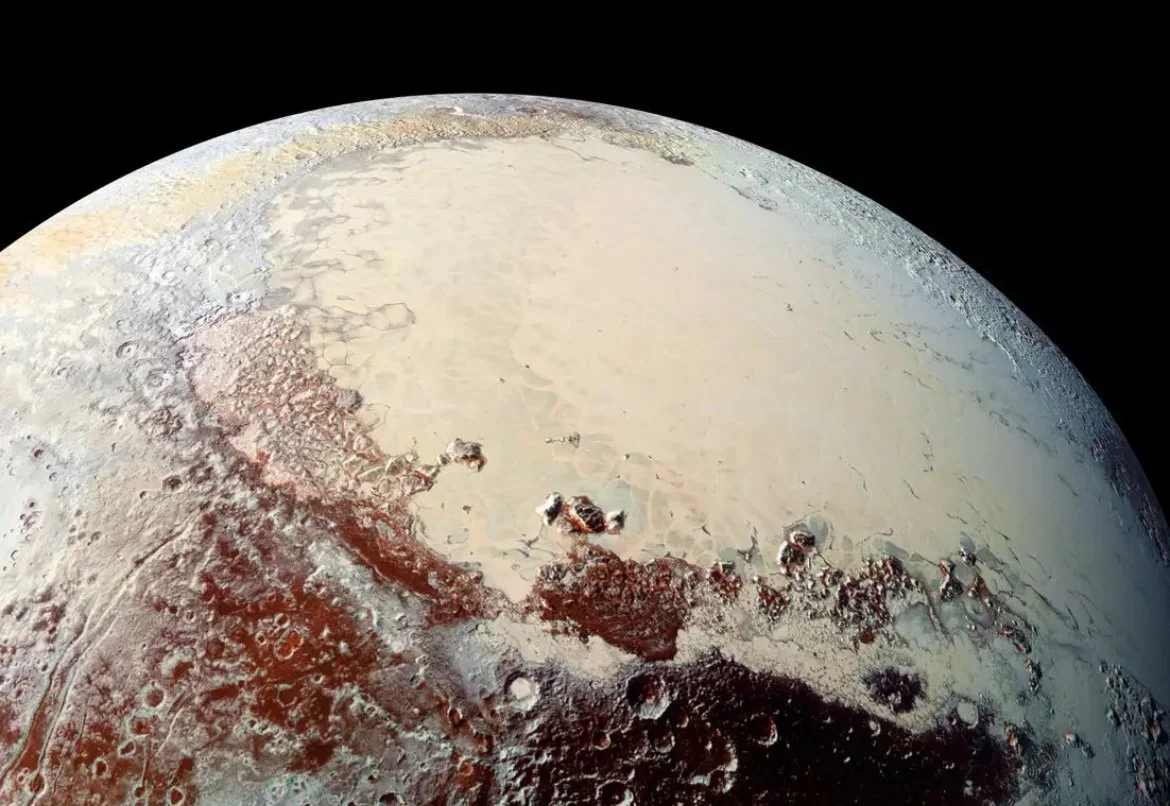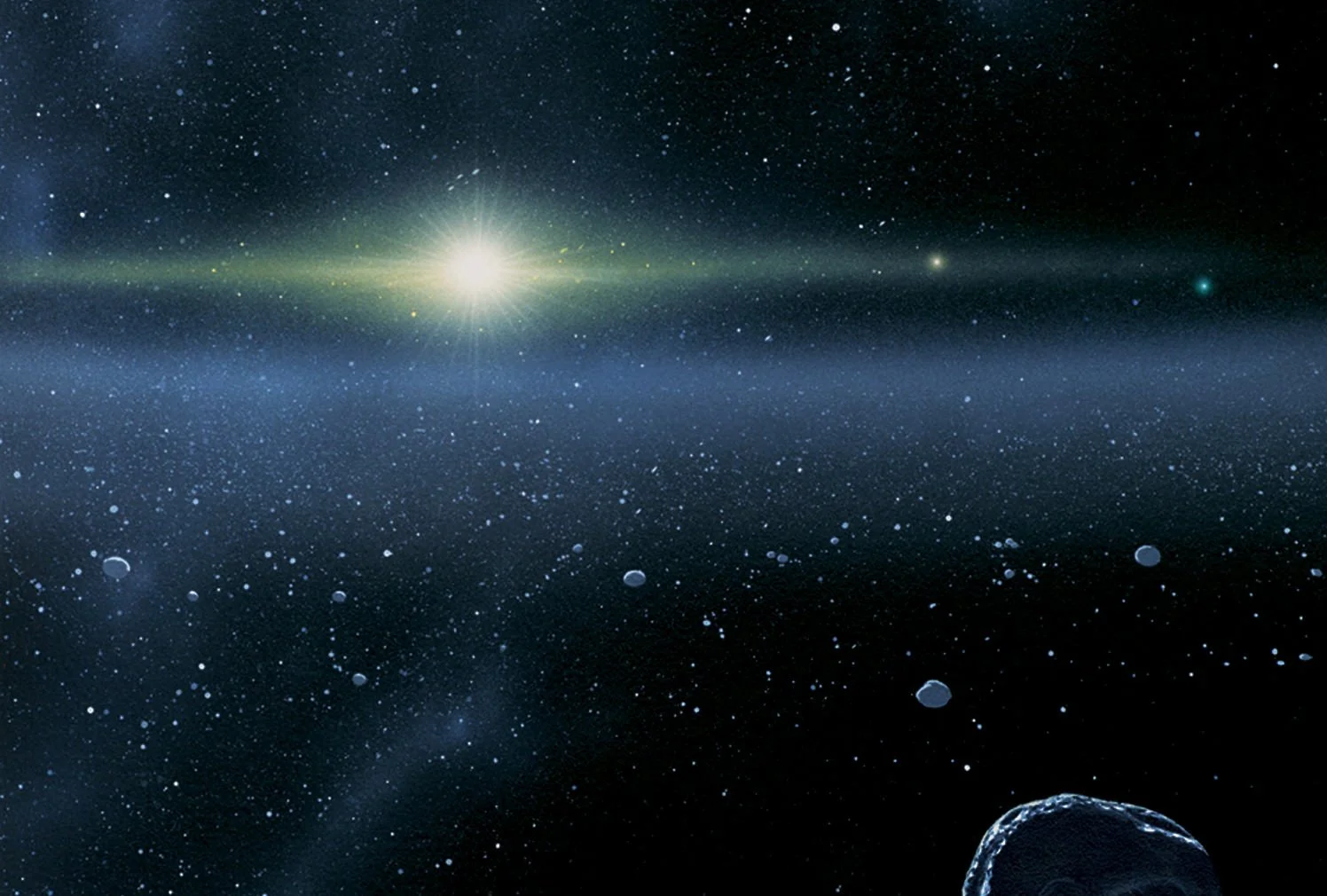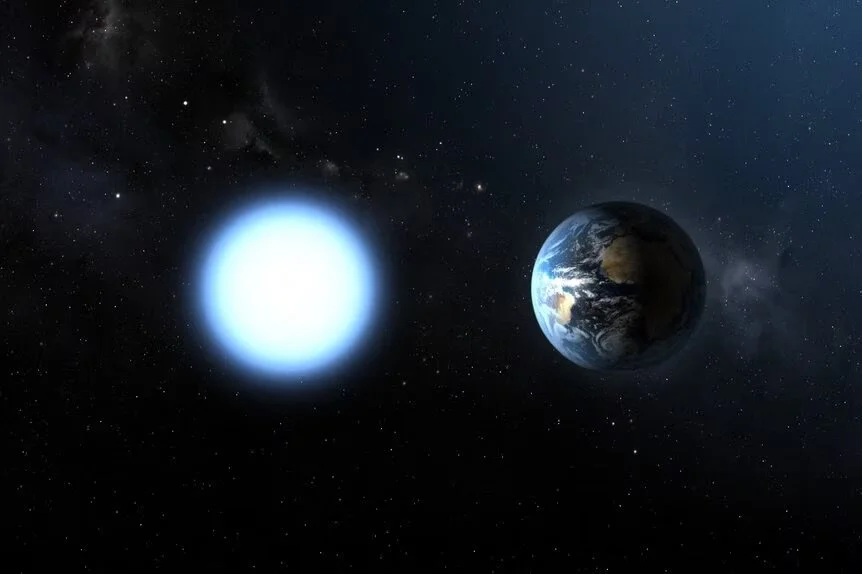THE SOLAR SYSTEM
What is the solar system?
This question is a bit more complicated than you might think, but generally, the solar system is a region of space consisting of a star at the center which we call the Sun (derived from the Latin word Sol, hence the term solar system) and the numerous planets, moons, asteroids and comets that are gravitationally bound to it. It is only one among hundreds of billions of star systems within the Milky Way galaxy but, for the foreseeable future, humans leaving the solar system remains in the realm of science fiction. Luckily for us, it is a relatively big and complex region of space full of fascinating objects and phenomena.
THE FORMATION OF THE SOLAR SYSTEM
As with all others like it, the solar system formed from the gravitational collapse of a massive cloud of gas and dust, called a nebula. The high abundance of gold and uranium within the Sun, relative to other stars, suggests that the Sun’s formation originated from the remnants of a supernova, the explosive death of a high-mass star where these heavier elements were likely synthesized.
As the massive nebula gradually contracted under its own gravity over millions of years, matter started to coalesce into numerous dense cores scattered throughout. One of these would become our solar system. At the densest point of this region, an object would begin to form, hungrily swallowing up the gas and dust around it, growing and growing until its gravity was strong enough to cause it glow hot from the intense pressure. This was a protostar, our Sun in its infancy.
As the infant Sun consumed and grew, the surrounding material would have began to churn around it in all directions. The paths of trillions of rocks and boulders would have constantly crisscrossed and collided. Over time, these violent clashes would have developed a dominant flow, and the surrounding sphere of debris and dust would have flattened out into a disk with the shrouded infant Sun at the center. Within this cosmic vortex of gas and dust, the collisions would have accrued mergers upon mergers of rocks which would develop into the numerous planets, moons and asteroids that populate much of the solar system.
Radiometric dating of the oldest meteorites and moon rocks we’ve collected reveal that the formation of the solar system, including the Sun and planets, took place about 4.6 billion years ago.
STRUCTURE OF THE SOLAR SYSTEM
The solar system is recognized today as having sorted itself into a number of informal but distinct regions. Moving outward from the Sun, we have the four inner terrestrial planets, the rocky asteroid belt, the four outer giant planets, and beyond lies the icy bodies of the Kuiper belt and the distant spherical Oort cloud.
For the most part, the solar system’s numerous worlds move along a shared orbital plane and in the same counterclockwise direction, a lasting signature of their common origins in the Sun’s accretion disk. Earth’s orbit, also known as the ecliptic, defines the baseline. Each of the main planets deviate from it by no more than 7°, giving the solar system a strikingly flattened appearance when viewed edge-on. That being said, not every object fits this neat geometry: many asteroids, dwarf planets, and comets follow exceptionally tilted or elongated orbits. This is especially true of objects beyond Neptune where the Sun’s gravitational influence has far less command. However, gravitational tugs from massive planets like Jupiter and Saturn or ancient collisions have nudged plenty of closer objects to the Sun off course as well.
Despite this expansive, diverse array of celestial objects, our solar system has maintained remarkable stability. The planets are comfortably spaced with mostly circular orbits so that their gravity isn’t causing great disturbances to each other. This is in comparison to many other systems we’ve observed where planets are tightly packed together with uneven orbits and are bound for chaos sooner or later. Our solar system has remained relatively harmonious for the last 4 billion years or so, leaving room for life to flourish on at least one planet.
Before we dive deeper into the numerous objects and regions, we should get our bearings on our sense of scale.
A common unit of measurement when discussing distances in the solar system is the astronomical unit (AU). This is the average distance between the Earth and Sun, which is about 150 million kilometers (93 million miles). So, if something is said to be 2 AU away, that means its distance is 300 million km. If something is said to be 0.5 AU away, that means its distance is 75 million km.
Another unit of measurement that can help put these distances into context revolves around the speed of light. You’ve likely heard of the light year unit as the distance that light travels in a year, which you’ve probably also heard is very, very far. Indeed, it is. A light year spans 9.5 trillion kilometers (6 trillion miles). For the solar system, however, we will focus more on shorter ranges such as the light day, light hour and even the light minute.
With all that said, let’s take a trip and explore our cosmic neighborhood!
LET’S TOUR THE SOLAR SYSTEM
Choose from the following primers to get an in-depth look. At the end of each planet’s primer, there is a section covering its moons, if it has any. Once finished, you can select the option to come back here to the Solar System primer or return to the EXPLORE Astro main menu.
The shining, celestial jewel at the center of the solar system.
The closest planet to the Sun.
Earth’s lead-melting twin sister.
The cradle of humanity.
The king of the planets.
The ringed wonder.
The coldest planet.
The furthest planet from the Sun.
Wonderous worlds that brave the perilous reaches of the solar system.
Frozen vagabonds that blaze through the night sky.
The icy, orbital outskirts of the solar system.
The rocky, fragmented halo dividing the planets.
The red planet.
WHERE DOES THE SOLAR SYSTEM END?
The outer bounds of the solar system are defined in different ways by different kinds of scientists, usually depending on the nature of the inquiries.
Some might say the main planets are the dominating force of the solar system beyond the Sun, therefore ending at the orbit of Neptune (~30 AU). Some may even include the Kuiper belt as it’s the last major population zone (~50 AU) which also contains the furthest planetary bodies. Many scientists would classify the solar system’s true limit to extend to the farthest reaches of the Oort cloud where the Sun’s gravity loses its dominance over the competing grasp of other stars (up to ~100,000 AU or 1.6 light years). However, there is very little known about this region or how far it actually spans. The scientific community’s “official” definition would draw the line at the heliosphere, a huge bubble of solar wind surrounding the solar system. The termination shock is where this solar wind slows abruptly as it begins interacting with the interstellar medium (~120 AU). Only two spacecraft, NASA’s twin Voyager probes, have ever reached beyond this point.
THE FATE OF THE SOLAR SYSTEM
The Sun is roughly halfway through its main sequence phase. Over time, the Sun will continue to steadily fuse the hydrogen in its core into helium. However, its fuel supply will eventually deplete. A shell of fusion hydrogen will form around the inert, helium-filled core. The Sun’s core is not hot or dense enough to fuse helium as much. Without sufficient thermonuclear fusion, there is no longer the same outward pressure to counteract the inward gravity. The Sun will contract; the core will squeeze and heat up even more which will trigger the fusion of shell hydrogen faster than the previous fusion of core hydrogen. The increased energy from fusion will cause the outer layers of the Sun to expand. This is the beginning of the end.
As the Sun expands, its surface area will increase enormously, causing the Sun to become hundreds or possibly thousands of times brighter. However, with the radiating energy spread over a larger volume, the Sun will actually become cooler. This will shift the Sun’s visible light to a red color, becoming a red giant.
It is expected that the Sun will expand out to a diameter of about 2 AU. This will certainly vaporize Mercury, Venus and possibly Earth. If Earth does remain, it will be as charred, molten rock, completely sterilized of life. The increased heat will almost certainly vaporize all of the surface ice on Mars, temporarily thickening the atmosphere, before intense stellar winds blow the entire atmosphere out into space.
The mass of the red giant Sun will be carried away by stellar winds, gradually weakening its gravitational pull on everything around it. The remaining planets, asteroids and comets will drift out into wider orbits, with some continuing on like normal and others becoming destabilized.
The red giant phase could last up to 1.5 billion years, from the initial expansion to the final casting off of its outer layers.
Unlike high-mass stars that go supernova, the Sun’s life will end more peacefully. The final curtain call will begin with the Sun casting off its outer layers during its red giant phase through intense stellar winds. This forms a growing shell of gas and dust around the Sun. The red giant slowly whittles away while the shell thickens. At first this diffuse gas will be cold and invisible but when the last of the Sun’s outer layers are blown away, the inner core will finally be exposed, and its intense ultraviolet radiation is unleashed. This begins the last beautiful flourish of the Sun’s glory.
The immense shell of gas around the Sun is ionized, absorbing the ultraviolet and re-emitting it as visible light. The hydrogen, oxygen and nitrogen gas begins to glow in bright colors of green, blue and red. The shell of gas has become a planetary nebula.
Fun fact: Planetary nebulas are called as such because when they were first observed in the late 18th century they were mistaken for planets due to their roughly round shape.
This beautiful, iridescent shroud will last an astronomical blink of an eye (around 10,000-20,000 years) before the expanding gas spreads thin and dissipates into the surrounding interstellar medium. One day, that dispersed gas may condense again and form parts of new stars and new worlds.
When the Sun has finished shedding off its outer layers into the surrounding space, all that will remain of it is the collapsed core in the form of a white dwarf. This left behind stellar remnant will be an incredibly dense object, retaining half of the Sun’s initial mass packed into a glowing sphere slightly larger than Earth. It will still radiate residual light and heat but will be much dimmer than it was in its main sequence phase. The surface of the white dwarf could initially reach temperatures of 100,000°C but will immediately begin to cool.
The remaining solar system will be much emptier and darker, and the white dwarfs grasp on its surrounding objects much diminished. The surviving planets and asteroids, orbiting in wider, slower, more elliptical paths. Over billions of years, gravitational interactions between planets and passing stars may destabilize these orbits, ejecting some planets entirely. The icy bodies of the Kuiper belt and Oort cloud, of which the Sun already had a tenuous grasp, will mostly become unbound. They will disperse and drift out into the darkness of interstellar space; some possibly scooped up by the gravity of other stars.
Over trillions of years the white dwarf will get cooler and dimmer, eventually becoming a black dwarf, completely invisible to the cosmos.

